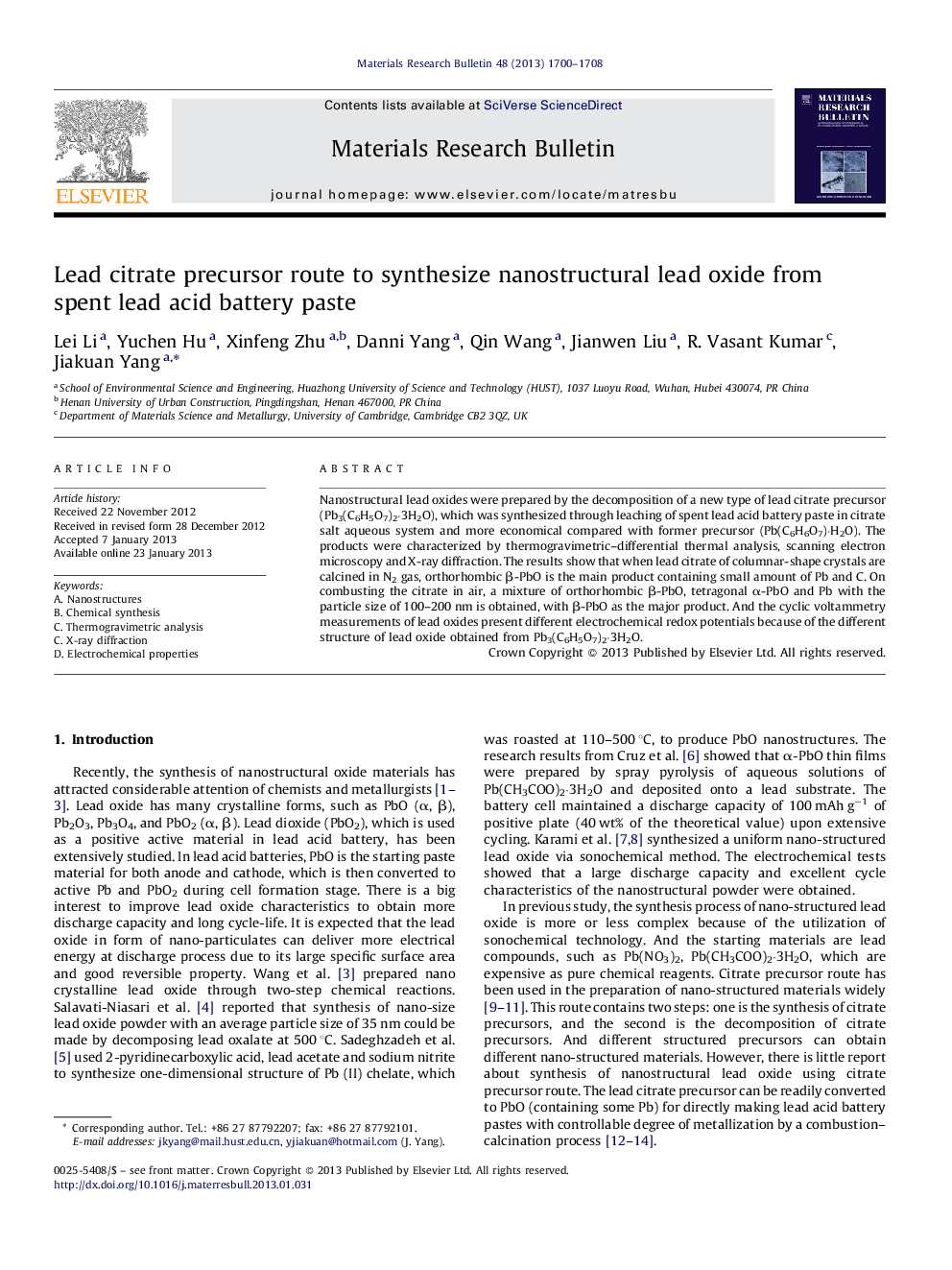| Article ID | Journal | Published Year | Pages | File Type |
|---|---|---|---|---|
| 1489096 | Materials Research Bulletin | 2013 | 9 Pages |
Nanostructural lead oxides were prepared by the decomposition of a new type of lead citrate precursor (Pb3(C6H5O7)2·3H2O), which was synthesized through leaching of spent lead acid battery paste in citrate salt aqueous system and more economical compared with former precursor (Pb(C6H6O7)·H2O). The products were characterized by thermogravimetric–differential thermal analysis, scanning electron microscopy and X-ray diffraction. The results show that when lead citrate of columnar-shape crystals are calcined in N2 gas, orthorhombic β-PbO is the main product containing small amount of Pb and C. On combusting the citrate in air, a mixture of orthorhombic β-PbO, tetragonal α-PbO and Pb with the particle size of 100–200 nm is obtained, with β-PbO as the major product. And the cyclic voltammetry measurements of lead oxides present different electrochemical redox potentials because of the different structure of lead oxide obtained from Pb3(C6H5O7)2·3H2O.
Graphical abstractFigure optionsDownload full-size imageDownload as PowerPoint slideHighlights► A new citrate precursor Pb3(C6H5O7)2·3H2O has been synthesized in leaching process. ► The calcination products of precursors in N2 consist of β-PbO, Pb and amorphous C. ► Nanostructural lead oxide is obtained in air with the particle size of 100–200 nm.
